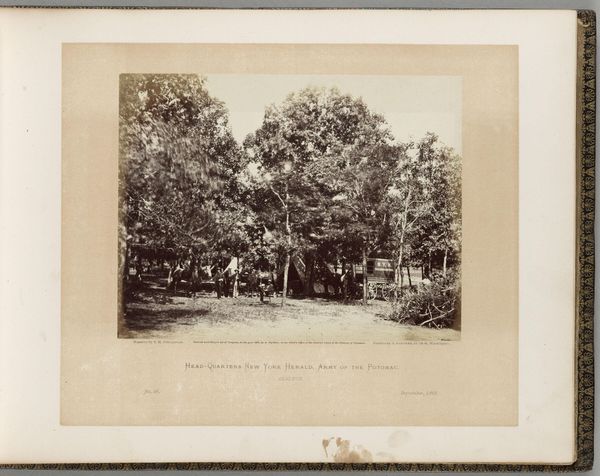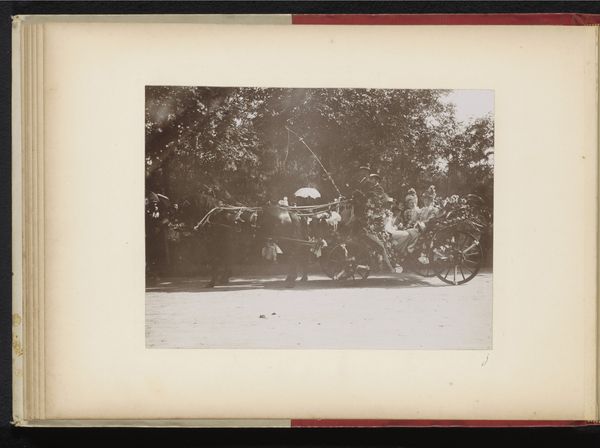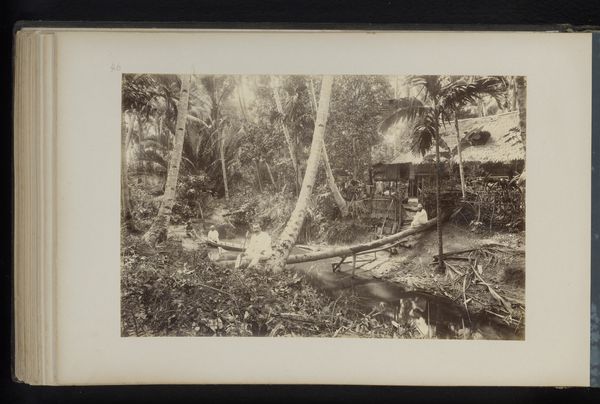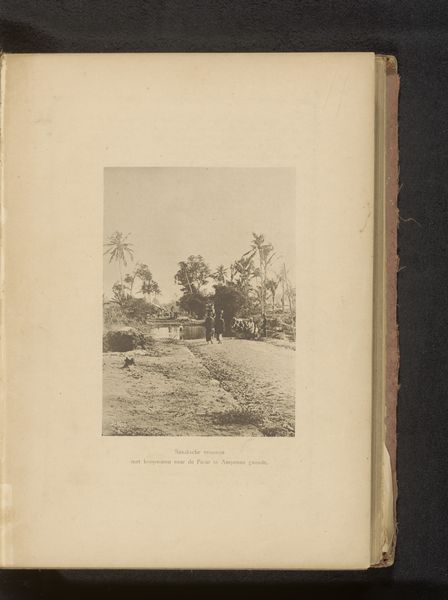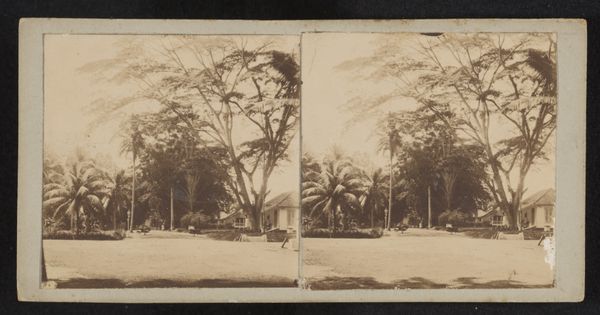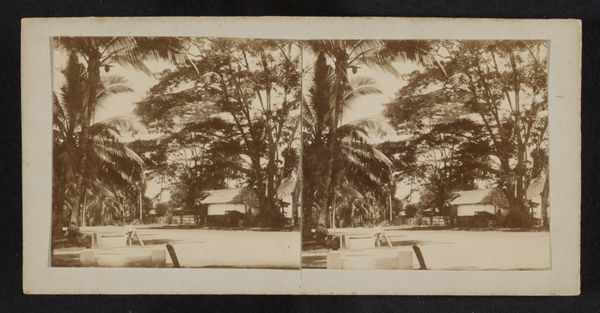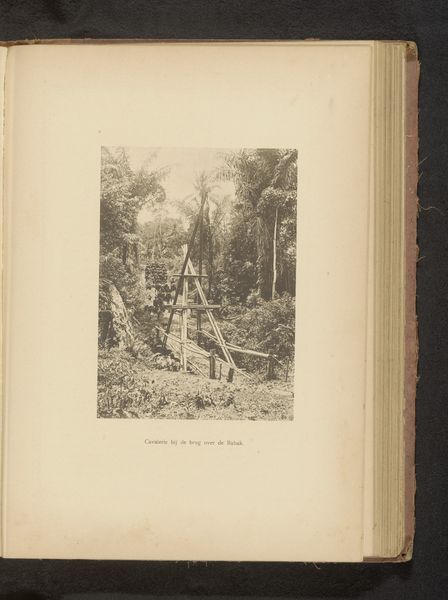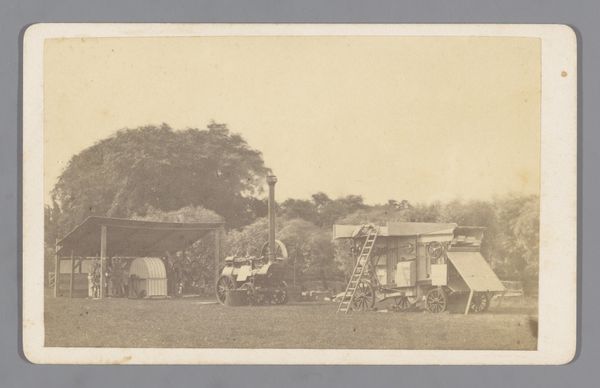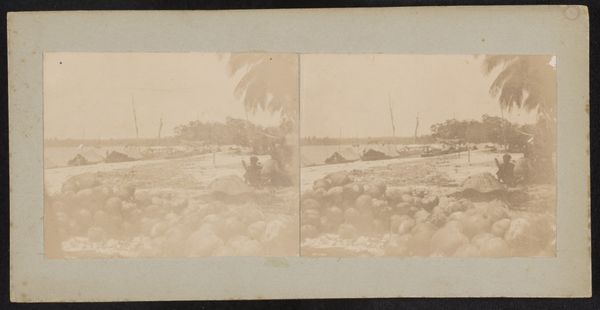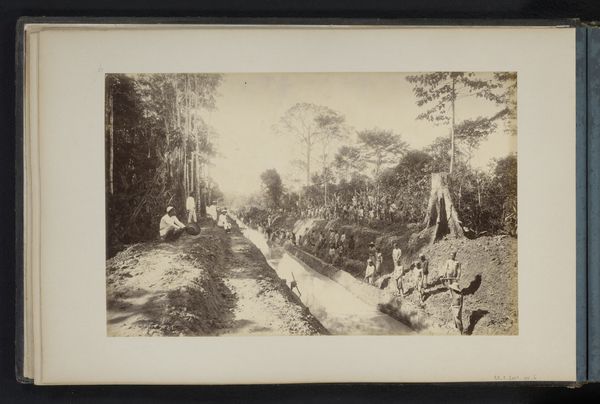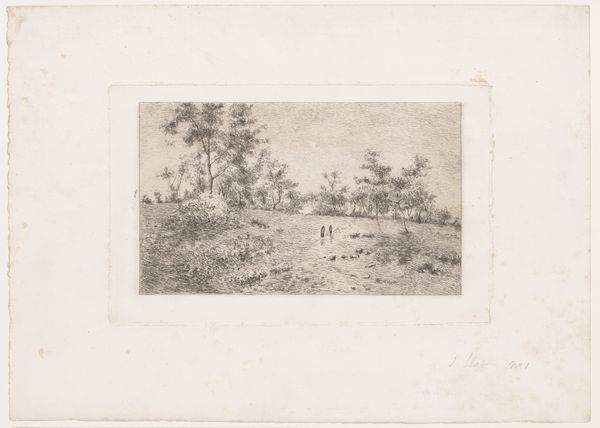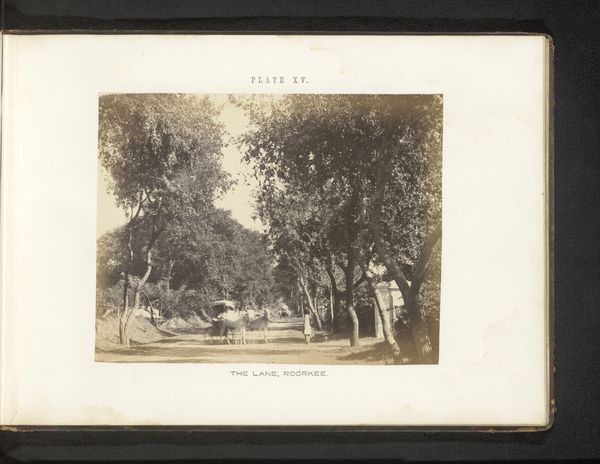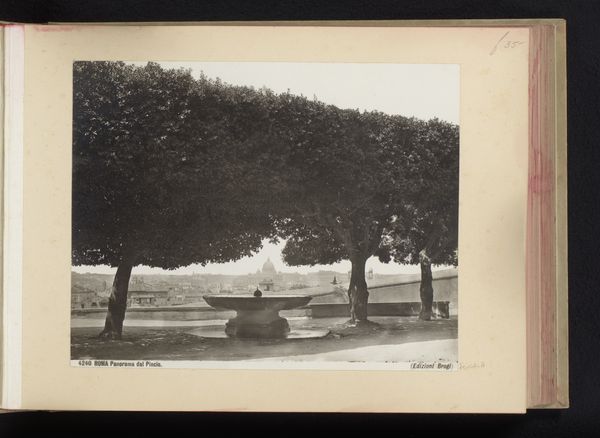
Groep mensen op de bankjes van een theehuis in Uenopark in Tokyo, Japan before 1897
0:00
0:00
photography, albumen-print
#
portrait
#
asian-art
#
landscape
#
photography
#
coloured pencil
#
park
#
genre-painting
#
albumen-print
Dimensions: height 201 mm, width 251 mm
Copyright: Rijks Museum: Open Domain
Editor: So, here we have "Groep mensen op de bankjes van een theehuis in Uenopark in Tokyo, Japan," a photograph by Kazumasa Ogawa taken before 1897. It looks like an albumen print. It's so tranquil; everyone's relaxing, enjoying the scenery. What stands out to you most in this piece? Curator: What strikes me is how meticulously this scene is presented, almost staged. It appears to be documenting a very specific idea of Japanese leisure for a Western audience. Do you notice how the people are arranged? Editor: Yes, they seem very posed, not candid. Is that a commentary on the West’s view of Asian culture at the time? Curator: Exactly. Photography in this period served both to document and to construct narratives. Ogawa was very successful at selling exoticised, marketable imagery of Japan, fulfilling European expectations of the "Orient." Consider how images like this contributed to a Western understanding—or misunderstanding—of Japanese society and culture. Editor: So it’s almost a performance of culture, captured in print. Was there resistance to this sort of representation at the time? Curator: There were, certainly, critiques of how Japan was being represented on the world stage as it modernized rapidly. However, artists like Ogawa were savvy. He presented images that both catered to and arguably shaped international perceptions. Also, let’s think about who could even afford photography at this time and where images like this were circulating. Editor: That’s a really important point; the economic aspect definitely affects the narrative. I never considered how much images can reflect market demand and power dynamics. Curator: Precisely! Understanding the forces behind art production is as important as understanding the artistic choices themselves. Editor: I learned a lot! Now I’m seeing how socio-political narratives are woven into something as seemingly simple as a photograph of a park. Thanks!
Comments
No comments
Be the first to comment and join the conversation on the ultimate creative platform.
